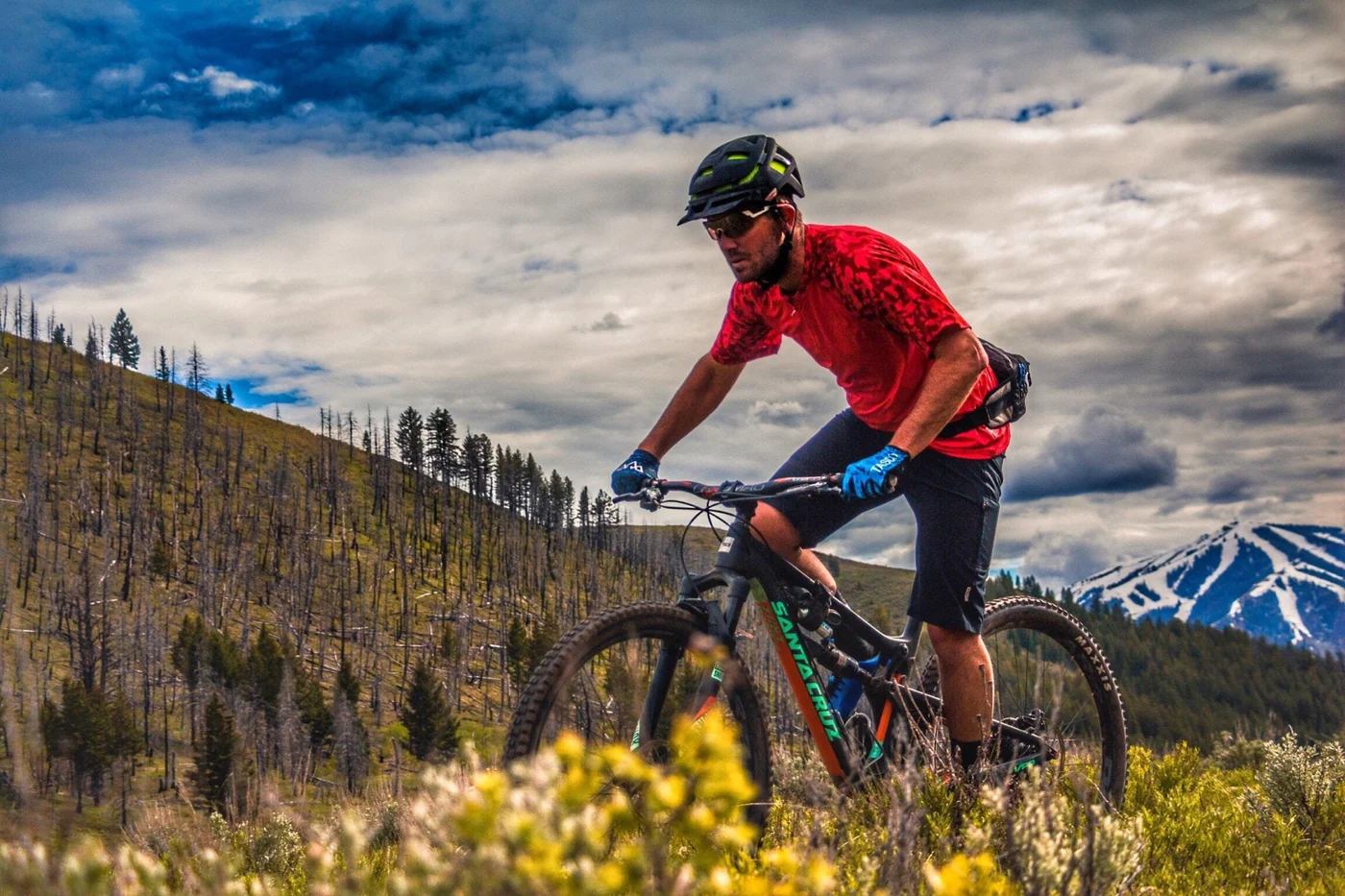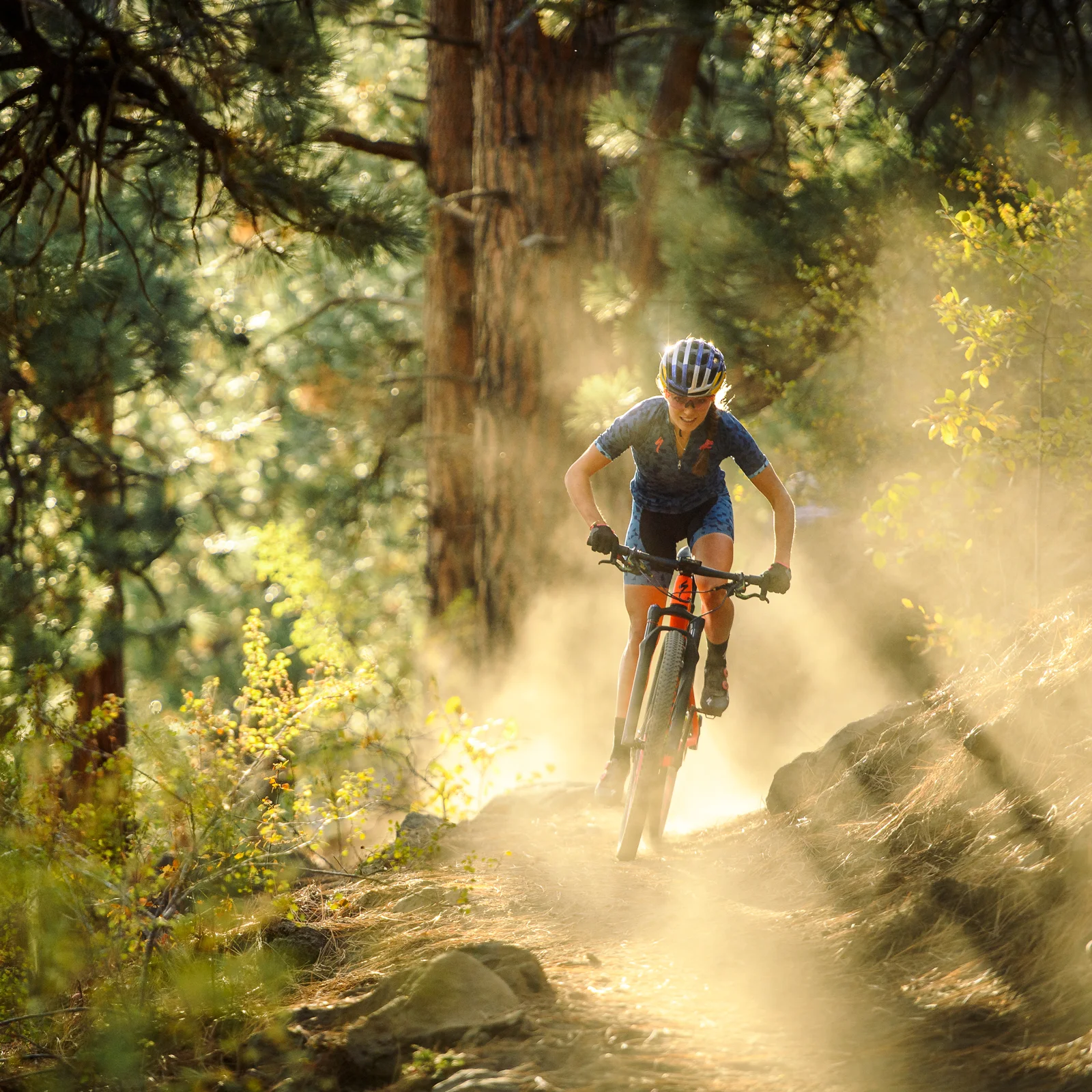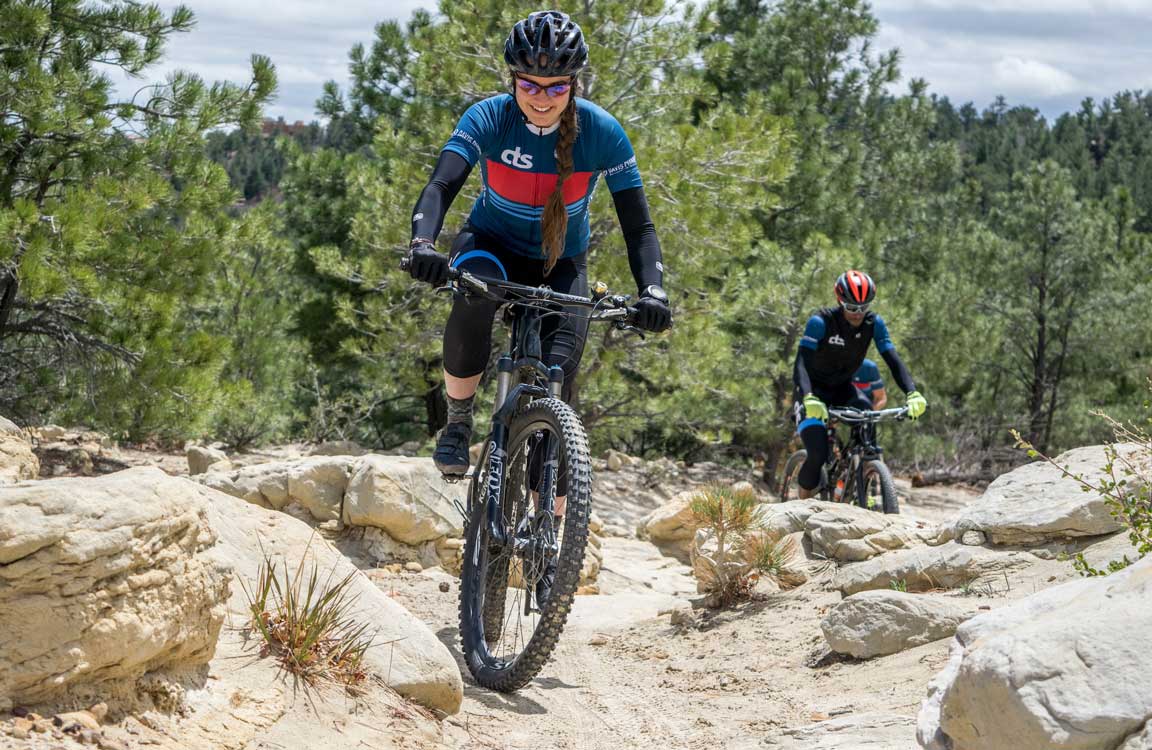As an avid mountain cyclist, I can attest to the incredible excitement and adventure that this sport offers. There’s something truly exhilarating about conquering challenging terrains, navigating through rugged trails, and immersing oneself in the beauty of nature. Mountain cycling not only provides a thrilling experience but also offers numerous benefits for physical and mental health. Today, I want to share some mountain cycling tips for you!
When I first started mountain cycling, I was instantly hooked by the adrenaline rush it provided. The feeling of pushing my limits and overcoming obstacles was unlike anything else I had ever experienced. It became a form of therapy for me, allowing me to escape from the stresses of everyday life and connect with nature on a deeper level.
In addition to the thrill factor, mountain cycling is an excellent way to improve physical fitness. The constant pedaling engages various muscle groups in your body, providing an effective cardiovascular workout. It helps build strength in your legs, core, and upper body while improving endurance and stamina.
Moreover, mountain cycling has significant mental health benefits as well. Being out in nature has a calming effect on the mind and reduces stress levels. The focus required to navigate through challenging trails also helps improve concentration and mindfulness.
Key Takeaways
- Mountain cycling is an exhilarating experience that requires proper preparation and equipment.
- Choosing the right bike and gear is crucial for a safe and enjoyable ride.
- Staying safe on the trails involves understanding your fitness level and trail difficulty, as well as practicing proper trail etiquette.
- Mastering essential mountain cycling techniques, such as uphill and downhill riding, is key to conquering the terrain.
- Proper nutrition, hydration, and bike maintenance are essential for a successful mountain cycling adventure.
Choose the Right Bike: Understanding the Different Types of Mountain Bikes
One crucial aspect of mountain cycling is choosing the right bike that suits your needs and preferences. There are several types of mountain bikes available in the market today – hardtail bikes with front suspension only, full suspension bikes with both front and rear suspension systems for added comfort on rough terrains, fat bikes designed for riding on snow or sand with their wide tires.
When selecting a mountain bike, it’s essential to consider factors such as terrain you’ll be riding on most frequently (rocky trails or smooth dirt paths), your budget constraints (mountain biking can be an expensive hobby), as well as your riding style (do you prefer speed or technical challenges?).
For beginners, a hardtail mountain bike is often recommended as it provides a good balance between performance and affordability. It offers front suspension to absorb shocks and bumps, making it suitable for most trails. However, if you’re planning to tackle more challenging terrains or engage in downhill riding, a full suspension bike might be worth considering.
Gear Up: Essential Equipment for Mountain Cycling
Before hitting the trails, it’s crucial to gear up with the right equipment to ensure your safety and comfort during rides. The most important piece of gear is undoubtedly a helmet. A properly fitting helmet can protect your head from potential injuries in case of falls or accidents.
In addition to a helmet, gloves are essential for providing grip on handlebars and protecting your hands from blisters and abrasions. Invest in quality gloves that offer padding on the palms for added comfort during long rides.
Proper footwear is also crucial when mountain cycling. Opt for shoes specifically designed for this sport with stiff soles that provide efficient power transfer while pedaling. These shoes should have good traction on slippery surfaces and offer ankle support.
Other protective gear such as knee pads, elbow pads, and body armor can be considered depending on the level of risk involved in your riding style or terrain choice.
Apart from protective gear, having the right tools and spare parts is essential for bike maintenance during rides. Carry a multi-tool with various wrenches and screwdrivers that can help you make minor adjustments or repairs on the go.
A small pump or CO2 inflator along with spare tubes are also must-haves in case of flat tires while riding trails far away from civilization.
Lastly, invest in a backpack or hydration system that allows you to carry essentials such as water bottles/snacks, extra layers of clothing (in case weather conditions change), first aid kit (for minor injuries), maps/compass (for navigation), etc.
Safety First: Tips for Staying Safe on the Trails
| Trail Safety Tips | Description |
|---|---|
| Plan Ahead | Research the trail, weather conditions, and bring necessary equipment. |
| Stay on the Trail | Stick to designated trails to avoid getting lost or damaging the environment. |
| Be Aware of Wildlife | Keep a safe distance from animals and never feed them. |
| Stay Hydrated | Bring enough water and drink regularly to avoid dehydration. |
| Protect Yourself from the Sun | Wear sunscreen, a hat, and sunglasses to avoid sunburn and heat exhaustion. |
| Carry a First Aid Kit | Be prepared for minor injuries and emergencies. |
| Let Someone Know Your Plans | Inform a friend or family member of your trail plans and expected return time. |
When it comes to mountain cycling, safety should always be a top priority. The thrill of the sport can sometimes overshadow the potential risks involved, but with proper precautions, you can minimize those risks and enjoy your rides to the fullest.
Wearing protective gear is non-negotiable. Always wear a helmet that fits properly and meets safety standards. Gloves provide grip and protect your hands in case of falls or crashes.
Before heading out on a trail, check weather conditions and trail reports. Avoid riding in extreme weather conditions such as heavy rain or thunderstorms as they can make trails slippery and dangerous.
It’s also advisable to ride with a buddy or in a group whenever possible. Not only does this enhance the overall experience by sharing moments of triumphs and challenges, but it also ensures that someone is there to help in case of emergencies.
Additionally, let someone know about your riding plans – where you’ll be going, estimated time of return – so that they can raise an alarm if needed.
Know Your Limits: Understanding Your Fitness Level and Trail Difficulty
Understanding your fitness level is crucial when it comes to mountain cycling. It’s essential to assess your current physical condition honestly before embarking on challenging trails or long-distance rides.
Start by setting realistic goals based on your fitness level. Gradually increase difficulty levels as you gain more experience and build up strength and endurance over time.
Trail difficulty ratings are often marked at trailheads or available online for reference. Familiarize yourself with these ratings (usually categorized from easy to difficult) so that you choose trails suitable for your skill level initially.
Remember not to push yourself too hard too soon; listen to your body’s signals during rides – take breaks when needed, hydrate frequently, fuel up with snacks if necessary – all while enjoying the beautiful surroundings nature has to offer!
Master the Basics: Essential Mountain Cycling Techniques for Beginners
Mastering the basics of mountain cycling is essential for beginners to ensure a safe and enjoyable experience on the trails. Here are some fundamental techniques that every beginner should focus on:
1. Body position and balance: Maintain a balanced position on your bike by keeping your weight centered over the pedals. Bend your elbows and knees slightly to absorb shocks and maintain stability.
2. Braking and shifting gears: Learn how to use your brakes effectively, especially when descending steep hills or navigating tight corners. Practice shifting gears smoothly to maintain an optimal cadence while climbing or accelerating.
3. Cornering and handling obstacles: Learn how to lean into corners while maintaining control of your bike’s trajectory. Practice maneuvering around obstacles such as rocks, roots, or fallen branches by lifting your front wheel slightly or hopping over them.
Remember, mastering these techniques takes time and practice, so be patient with yourself as you gradually improve!
Uphill and Downhill Riding: Tips for Conquering the Terrain
Uphill riding can be physically demanding but immensely rewarding once you conquer those challenging climbs! Here are some tips to help you tackle uphill terrain more efficiently:
1. Maintain a steady pace: Find a comfortable rhythm that allows you to pedal consistently without exhausting yourself too quickly.
2. Use proper gear ratios: Shift into lower gears before starting uphill sections so that you can maintain a higher cadence without straining too much.
3. Focus on breathing technique: Take deep breaths in through your nose and exhale through pursed lips during climbs; this helps oxygenate muscles better.
When it comes to downhill riding, confidence is key! Here are some tips for descending safely:
1. Control speed with brakes: Feather both brakes gently rather than squeezing them hard; this provides better control over speed while maintaining stability.
2. Look ahead: Keep your eyes focused further down the trail rather than directly in front of your wheel; this helps anticipate obstacles and adjust your line accordingly.
3. Shift your weight back: Move your body slightly behind the saddle to maintain balance and prevent the front wheel from lifting off the ground.
Always be aware of trail features such as loose gravel, rocks, or sudden drops that may require adjustments in technique or speed.
Trail Etiquette: Respecting Other Riders and the Environment
Respecting other riders and the environment is crucial for maintaining a positive mountain cycling community and preserving natural trails for future generations. Here are some essential trail etiquette guidelines to follow:
1. Yielding to other riders and hikers: When encountering others on the trail, yield to them by slowing down or stopping if necessary. Uphill riders generally have right-of-way over downhill riders.
2. Staying on designated trails: Avoid cutting switchbacks or creating new trails; this can cause erosion and damage fragile ecosystems.
3. Leave No Trace principles: Pack out what you pack in – dispose of trash properly, avoid disturbing wildlife, minimize noise pollution, etc., so that others can enjoy nature’s beauty as well.
By following these simple guidelines, we can ensure a harmonious coexistence between mountain cyclists, hikers, and nature itself!
Fuel Up: Nutrition and Hydration Tips for Mountain Cycling
Proper nutrition and hydration are vital for maintaining energy levels during long rides on challenging terrains. Here are some tips to keep in mind:
1. Stay hydrated: Drink water regularly before, during, and after rides; aim for at least one bottle per hour depending on weather conditions.
2. Pre-ride nutrition: Consume a balanced meal containing carbohydrates (for energy), protein (for muscle repair), healthy fats (for sustained energy) before heading out on longer rides.
3. On-the-go snacks: Carry easily digestible snacks such as energy bars/gels/fruit/nuts that provide quick bursts of energy when needed without weighing you down.
Remember, everyone’s nutritional needs may vary, so experiment with different foods and hydration strategies to find what works best for you!
Maintenance Matters: Keeping Your Bike in Top Condition
Proper bike maintenance is essential for ensuring a smooth and safe riding experience. Here are some key maintenance tasks to keep your bike in top condition:
1. Regular cleaning: Clean your bike after every ride to remove dirt, mud, and debris that can cause premature wear on components.
2. Tire pressure: Check tire pressure regularly; underinflated tires can affect performance and increase the risk of flats.
3. Brake and gear adjustments: Periodically check brake pads for wear and adjust as necessary; ensure gears shift smoothly without skipping or hesitation.
Knowing when to take your bike to a professional mechanic is also crucial – they can perform more complex tasks such as wheel truing, suspension servicing, or drivetrain overhauls that require specialized tools or expertise.
Embrace the Adventure of Mountain Cycling
In conclusion, mountain cycling offers an incredible adventure filled with excitement, physical challenges, mental rejuvenation, and a deep connection with nature. By choosing the right bike suited to your needs and preferences while gearing up with essential equipment for safety and comfort on the trails – you’re setting yourself up for an unforgettable experience!
Remember always to prioritize safety by wearing protective gear, staying informed about trail conditions/weather reports before heading out on rides while respecting other riders/hikers/environment through proper trail etiquette practices.
Mastering basic techniques such as body position/balance along with uphill/downhill riding skills will enhance your confidence level on various terrains while fueling up properly through nutrition/hydration strategies ensures sustained energy levels during long rides.
Lastly but most importantly – maintaining your bike regularly keeps it in optimal condition so that it performs at its best whenever you hit those trails!
So embrace the adventure of mountain cycling wholeheartedly! Start small, set realistic goals, and gradually challenge yourself to explore new trails and push your limits. Remember to always prioritize safety, respect for others, and the environment. Happy riding!
FAQs
What is mountain cycling?
Mountain cycling, also known as mountain biking, is a type of cycling that involves riding bicycles off-road on rough terrain, such as mountains, hills, and trails.
What are the benefits of mountain cycling?
Mountain cycling is a great way to improve your physical fitness, build endurance, and strengthen your muscles. It also provides an opportunity to explore nature and enjoy the outdoors.
What are the essential mountain cycling tips for beginners?
The article “Conquer the Trails: 10 Essential Mountain Cycling Tips for Beginners” provides tips such as choosing the right bike, wearing appropriate gear, practicing basic skills, and staying hydrated.
What type of bike is best for mountain cycling?
A mountain bike is the best type of bike for mountain cycling. It is designed with features such as suspension, wider tires, and a sturdy frame to handle rough terrain.
What gear should I wear for mountain cycling?
It is important to wear a helmet, gloves, and appropriate shoes for mountain cycling. Other gear such as knee and elbow pads, sunglasses, and a hydration pack may also be helpful.
What basic skills should I practice for mountain cycling?
Basic skills such as braking, shifting gears, and maintaining balance are important for mountain cycling. It is also helpful to practice riding on different types of terrain and in different weather conditions.
How can I stay safe while mountain cycling?
Staying safe while mountain cycling involves wearing appropriate gear, practicing basic skills, staying hydrated, and being aware of your surroundings. It is also important to ride within your skill level and to avoid taking unnecessary risks.
What are some common mistakes beginners make in mountain cycling?
Common mistakes beginners make in mountain cycling include choosing the wrong bike, not wearing appropriate gear, not practicing basic skills, and taking unnecessary risks. It is important to take the time to learn and practice the necessary skills before hitting the trails.
Originally posted 2024-01-01 03:20:01.






